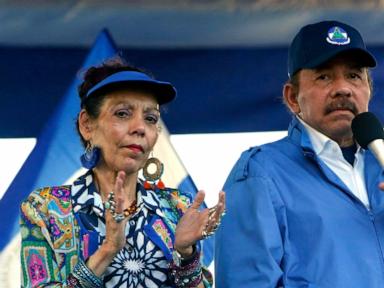ARTICLE AD BOX
IT takes most mountaineers at least 70 days to scale the world’s highest peak, as even the fittest athletes have to acclimatise their bodies to the deadly thin air on Mount Everest.
But Britain’s toughest MP and three Special Forces pals are training to smash the world record by reaching the peak in just seven days — by inhaling controversial xenon gas.
 Getty
Getty Simon Jones
Simon Jones Simon Jones
Simon JonesFormer Commando Al Carns, 45, hopes to leave home on a Monday, reach the roof of the world by Thursday and be back in time for Sunday lunch — all while raising £1million for charities.
And he brushed off critics of xenon therapy, insisting the Special Forces mindset was all about making “marginal gains” to give your side the winning edge.
He told The Sun: “This is like a Special Forces mission. We have the best people, the best training, the best kit and we are at the very cutting edge of science.
“We’ll go in, hit the objective and leave no trace, no waste.”
It took more than 30 years from the first official reconnaissance mission in 1921 before Sir Edmund Hillary and Tenzing Norgay became the first humans to reach the summit in 1953.
‘Cutting-edge tech’
Today, most expeditions take seven to ten weeks to complete.
But Al, and his former comrades Kevin Godlington, 49, Garth Miller, 51, and ThruDark clothing founder Anthony Stazicker, 41, are due to be treated with xenon gas two weeks before the summit attempt next month.
The gas boosts the body’s production of red blood cells, which could help them avoid potentially fatal altitude sickness.
They will travel to a hospital in Germany, where medics led by Professor Michael Fries will supervise the inhalation of xenon, administering a low dose for 20-30 minutes.
They are already sleeping in hypoxic tents — with reduced oxygen — to prepare them for the mountain.
When they first used the tents five weeks ago, they simulated an altitude of 3,000m.
Now they have dropped the oxygen content inside the tents to replicate 5,400m, which is roughly the height of Everest Base Camp.
Al, who is now the veterans minister, said he had “the worst sleep ever” in the tents.
In the beginning, oxygen was controversial, hypoxic tents were pretty controversial, people said it was snake oil. Now it’s xenon. Xenon won’t propel us to the top, but it will protect us as we climb fast.
Team leader Garth, a Gurkha officer turned long-haul pilotAnd he defended the use of “cutting-edge technology” to smash the record for the fastest ascent, which was set by Garth in 2022, when he completed the climb, travelling from London to the summit and back, in 21 days.
The use of xenon gas, which is used as a medical treatment but banned in professional sport, has split the climbing community as traditionalists fear it could make mountains like Everest even more crowded with the cash-rich, time-poor Instagram crowd buying their way to the top.
Team leader Garth, a Gurkha officer turned long-haul pilot, claimed that using xenon was safer for the climbers and better for the environment — because the team’s footprint in the sacred mountain will be a tenth of normal expeditions.
He said: “In the beginning, oxygen was controversial, hypoxic tents were pretty controversial, people said it was snake oil. Now it’s xenon. Xenon won’t propel us to the top, but it will protect us as we climb fast.”
He added: “We are all fathers, so as fathers we are going to load as many of the variables as we can in our favour.”
The Sun joined the team as they trained to cross crevasses on ladders with crampons at the ThruDark HQ in Poole.
It was the first time Al had put on snow shoes since a Special Forces mission in Afghanistan’s Hindu Kush mountains in 2013.
Al said Special Force successes routinely relied on “marginal gains” — gleaning as many small advantages as possible to stack the odds in your favour.
He said: “New drills, new skills, new technology — each bit of it increases the chances of success by a few percentage points.”
Between them, the team have served in every major conflict since 1992 and earned every military gallantry medal except the Victoria Cross — but all of the citations are secret.
 Simon Jones
Simon Jones Simon Jones
Simon JonesDad-of-three Al won a mention in dispatches in Afghanistan in 2007, a Military Cross in 2011 and a Distinguished Service in 2024.
He joined the Royal Marines in 1999 and rose to the rank of colonel after serving multiple combat tours in Afghanistan.
Anthony, also a dad of three, and a former sergeant, won a Conspicuous Gallantry Cross in Afghanistan in 2013.
He joined the Royal Marine Commandos before transferring to the elite Special Boat Service where he specialised as a sniper and demolitions expert.
He left at the rank of sergeant and set up the military-inspired ThruDark clothing brand. He appeared as one of the directing staff on SAS: Who Dares Wins and was briefly tipped to take over from the show’s then host Ant Middleton.
His pal Kevin, who now runs an ethical palm oil firm in West Africa, has a special interest in xenon as it can also be used to treat traumatic brain injuries.
Blessed by monk
He survived a serious head injury on a mission in Europe. Also a dad-of-three, he joined the Royal Engineers at 16 and served for 13 years, ending in the Special Forces. He left at the rank of corporal.
Kevin claimed early studies had suggested xenon broke down plaques in the brain which are associated with a number of debilitating conditions.
If all goes to plan, they will fly from London to Kathmandu, the capital of Nepal, then immediately board a helicopter to Lukla — known as the most dangerous airport in the world.
They will then transfer into a specialised high-altitude chopper for the final leg to Everest Base Camp at 5,400m above sea level.
There, they will meet their Sherpa support team, be checked by a doctor, blessed by a Buddhist monk and hope to start climbing within two hours.
Once they cross the Khumbu icefall they will stop off for a “cuppa soup” then carry on to Camp 2 at 6,400m for the night.
We have all been on operations where we have come back but other people didn’t. It is harrowing. Especially when you go to the funerals after and there are little kids in suits there.
Al Carns, Labour Minister and former CommandoGarth insisted their military experience would let them climb in conditions that other climbers might avoid — including at night, or in snow.
But he said the biggest risk to their success was the weather.
He said: “We can’t guarantee the weather. Whether that be high winds on the summit or low clouds that stop us flying into base camp.”
There is a convention that climbers don’t attempt to reach the summit if winds are stronger than 30mph because the final approach is “very narrow and very exposed”.
And what happens after Camp 2 will depend on how their bodies are performing.
The expedition, known as Mission: Everest, is raising funds for a number of veterans charities including Scotty’s Little Soldiers, which supports the children of the fallen.
Al said: “We have all been on operations where we have come back but other people didn’t. It is harrowing. Especially when you go to the funerals after and there are little kids in suits there.”
More than 335 people have died attempting to climb Everest. Around 70 deaths are attributed to acute altitude-related illness.
From Base Camp onwards they will be wearing monitors to track their blood pressure and heart rates.
The data will be transmitted live to a team in Base Camp.
For most healthy people at sea level, the oxygen saturation in their blood is in the high nineties.
 Getty Images - Getty
Getty Images - Getty Royal Geographical Society via G
Royal Geographical Society via GBut at the 8,849m summit there is 30 per cent less oxygen than at sea level.
And the climbers expect the oxygen saturation in their blood to drop to around 75 per cent. Garth admitted they were “guinea pigs” for xenon-assisted ascents.
The use of the gas has been pioneered by Austrian mountain guide Lukas Furtenbach.
He claimed the loudest criticism of the strategy has been led by his biggest competitors who offer guided ascents on Everest.
To support Mission: Everest, scan the code
 Scan the image to help support the mission
Scan the image to help support the missionQUEST FOR OUR SERVICE HEROES
GARTH MILLER, who still serves as a major in the Army reserves, said his team is part of a long tradition of British military veterans being drawn to the world’s tallest mountain.
It was two Army officers stationed in India – Sir Francis Younghusband and Charles Bruce – who held the first serious talks about scaling Everest in the 1890s.
Later, many who took part in the legendary attempts of the 1920s – including George Mallory – had served in the First World War.
Garth – the team’s most experienced climber – said: “These guys were carrying wounds, mental and physical, from the First World War.”
Mallory and his climbing partner Andrew “Sandy” Irvine vanished on the mountain in 1924, fuelling decades of conjecture over whether or not they reached the peak.
Garth pointed out that a key member of Mallory’s support team, John de Vars Hazard, had won a Military Cross on the Western Front.
He said: “When Hazard crested the North Col, his tweed – they were all wearing tweed – was soaked with blood from a wound from the Somme that had reopened on the climb.”
Garth served for five years in the Royal Gurkha Rifles before joining a Special Forces reserve.
He has already summitted Everest and Lhotse, the world’s fourth-highest mountain, and climbed to over 8,000m on K2 and Broad Peak, in Pakistan, but turned back before the summits due to dangerous conditions.
He holds the world record for the fastest ascent of Everest – which he measures from the time he leaves his home to when he gets back – at 21 days.
Between them, the Mission: Everest team have 75 years’ military service, having all served in the country’s most fearsome Special Forces regiments.
- Unlock even more award-winning articles as The Sun launches brand new membership programme – Sun Club.
.png)
 4 hours ago
2
4 hours ago
2








 English (US)
English (US)